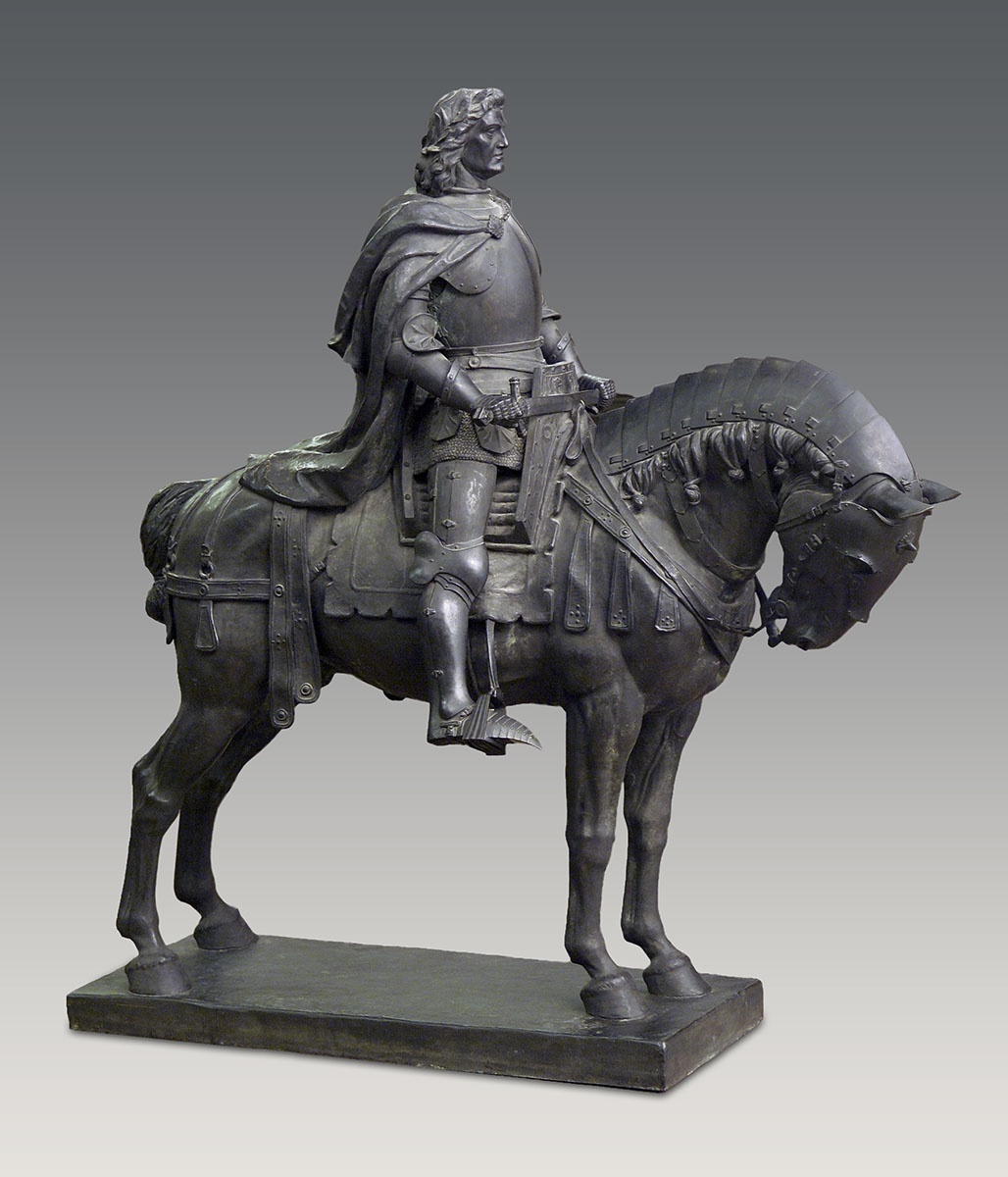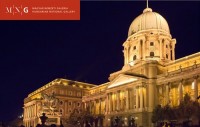János Fadrusz was a remarkable figure of the monumental sculpture of late Hungarian historicism at the turn of the 19th and 20th centuries. His twice life-sized statue of Matthias was erected in the native town of the king, Kolozsvár (today Cluj-Napoca, Romania), outside the south front of the St Michael church in 1902. In this composition, the supporting figures can be linked to the then fashionable neo-baroque, while the figure of Matthias is a fine example of monumental sculpture. At the time of the inauguration of the Matthias monument, the sculptor received a state commission to produce the reduced variant of the public statue for the so-called Hunyadi room created in the extension of the Royal Palace. The features of the young king sitting in armour in a tall-backed saddle are stern, his wavy hair coming down to his shoulders is crowned by a laurel wreath. This small equestrian statue is just as grandiose and dignified as the large public monument, radiating power and grit. The composition is harmonious and solemn despite its smaller scale, but its monumental effect is lost.
en

